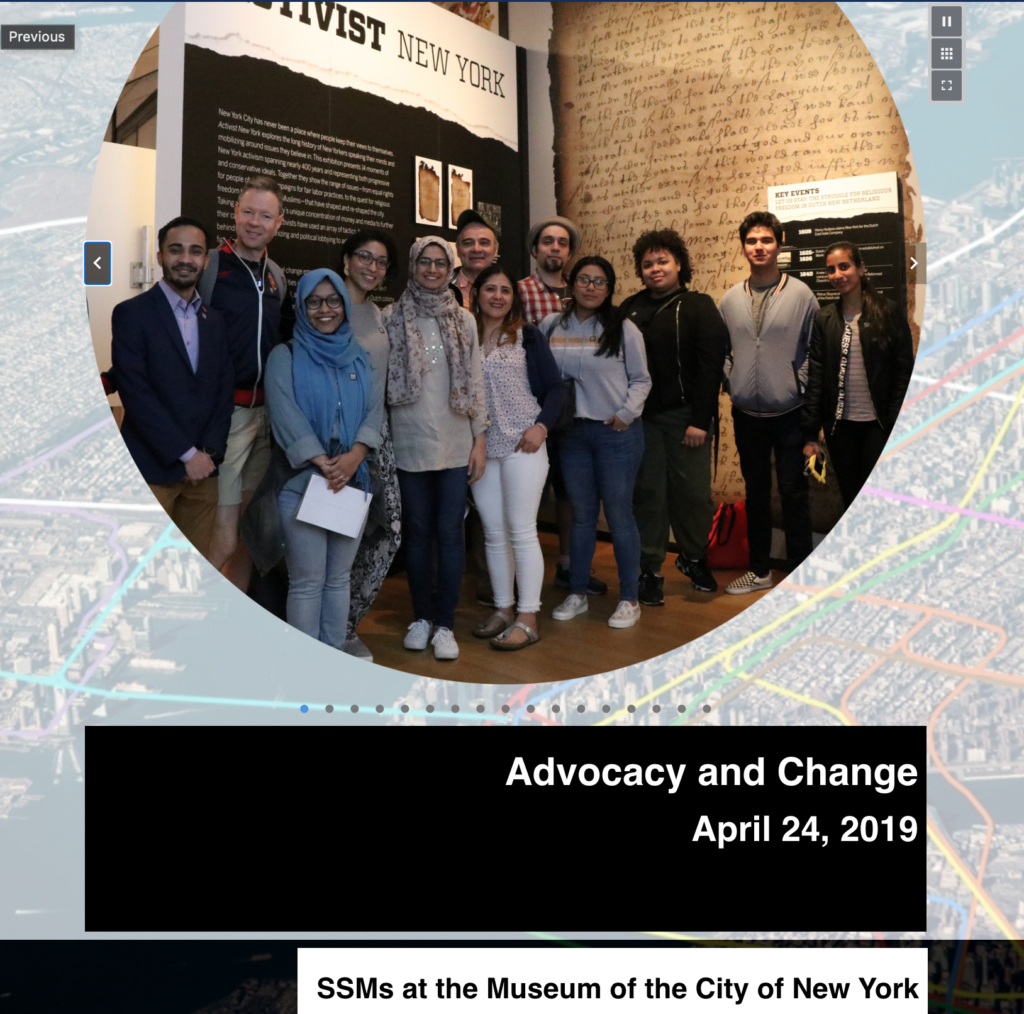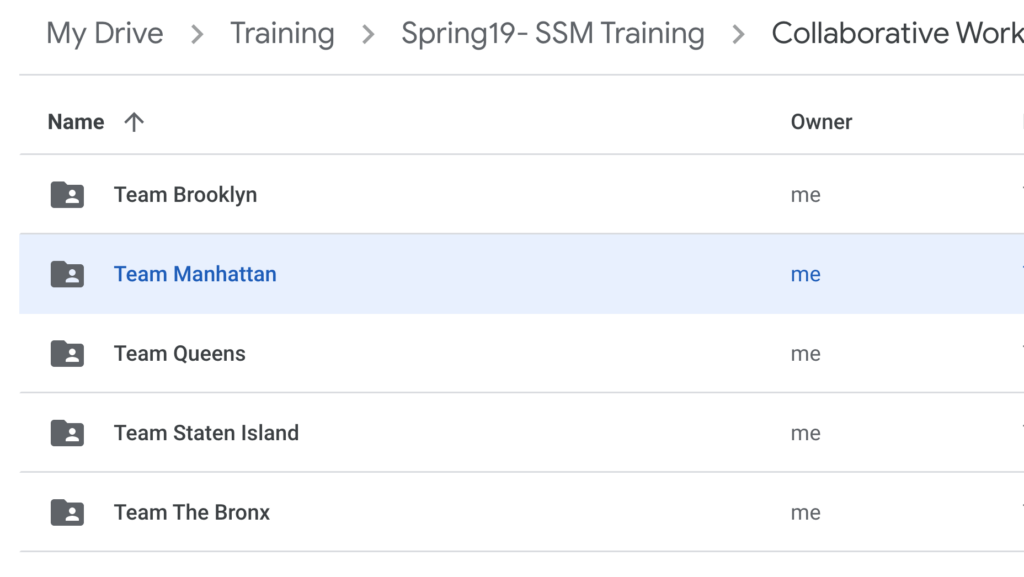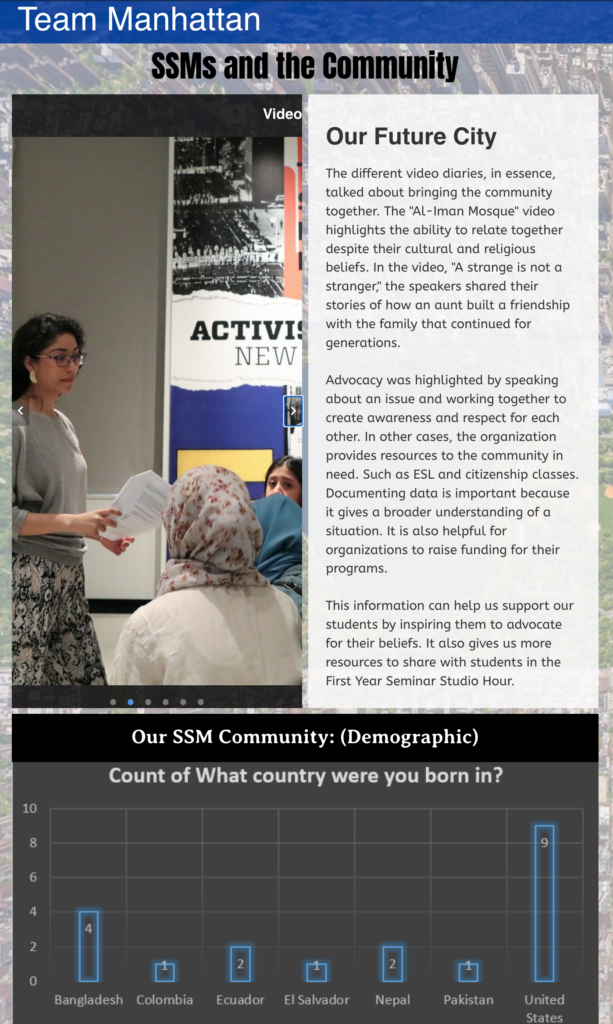The readings related to pedagogy allowed me to reflect and think about the work I do with students at LaGuardia Community College.

Context
First-Year Seminar and Student Success Mentors
At LaGuardia Community College, I oversee the Student Success Mentor (SSM) Program. We hire 15 -20 students each semester. The SSMs in the program facilitate the studio hour lab session that is part of a discipline-specific First Year Seminar Course taught by faculty in the discipline and mentored by one of our SSMs. For example, if a first-year student is majoring in business, they will take the Business and Technology First Year Seminar Course. Currently, we have 16 discipline-specific courses. Our program serves approximately 2000 students who are enrolled in the First Year Seminar.
Learning Digital Communication Ability
Before students graduate and or transfer from our institution, they should learn Digital communication, Written Communication, and Oral communication as part of the Core Compemntices and Abilities. Students begin their development in Digital Communication Ability by creating their first Core ePortfolio on Digication. This ePortfolio goes on a journey with the student from the first semester at LaGuardia until their capstone course.
The Student Success Mentors play an instrumental role in helping students develop their first ePortfolio. Therefore, new SSMs undergo 30 hours of training (5 weeks) before facilitating their First Studio Hour. We touch on several topics ranging from the following:
- Mentorship
- DEI
- Digital Tools
- Class management
- Empathy
- Facilitation
- Digital Communication
- College Resouce and etc.
New and Returning SSMs also participate in Professional Development every semester to go over any updates related to technology or topics that need to be addressed.
Community Building Through Collaborative Digital Blog Projects
For the last eight years, the Student Success Mentor Community is very strong. They support each other. Therefore, it’s important for us to create opportunities for SSMs to work together on different projects beginning with the Blog they create with New SSMs and Returning SSMs.
At the culmination of their New SSM Training, the program takes the New SSMs and returning SSMs on a trip to a cultural site. The aim of this trip is to help the New SSMs and Returning SSMs to connect with each other, but also connect the training topics to the artifacts they observe and analyzed at a cultural site. We have visited the MET, Ellis Island, Museum of the City of New York. We provide SSMs with prompts to help them think about what they learned during training and how it’s connected to the artifact. As a team, they come together to answer these questions. They are instructed to take videos, and pictures and take notes. One example is, at the MET, we asked teams to select one artifact they saw at an assigned exhibition and explain how this artifact represents one of the SSM Core Values and how it relates back to the work they will be doing with students once the semester begins.
What to do with media? Computer Literacy Skills
As a former student of graphic design and new media arts I know firsthand how important it is to organize, name, categorize, and backup media. One of the techniques I emphasize before we begin our exploration at the exhibit is to make sure that we have the media in one platform such as google drive to upload and share the media with team members along with any notes they are making as they are documenting their experience.

Putting it together!
In the following session, after they have gone to the cultural site, they meet in the lab. During this session, SSMs begin their work by creating a blog on ePortfolio with the information, videos, and photos they have gathered. As they are creating this blog in the lab, they are running from one computer to another. They are talking, laughing, and overall, helping each other build one blog. Once they have created their blog, they present the section of their blog. During the presentation, you can see the work that went behind creating this blog and how they all supported the work. They practice the digital communication skills they learned during training and also the different topics while creating a lasting community of mentors.



